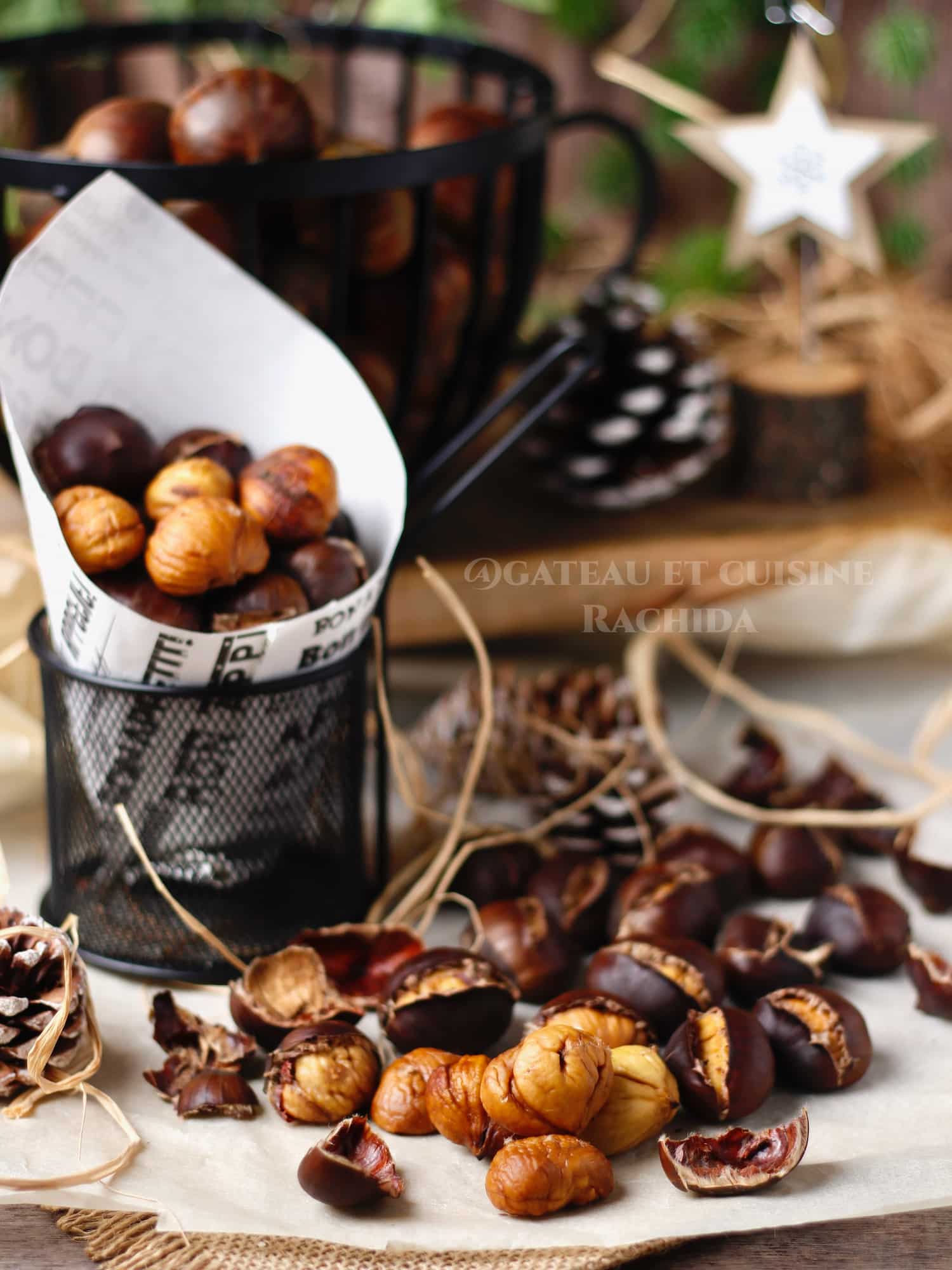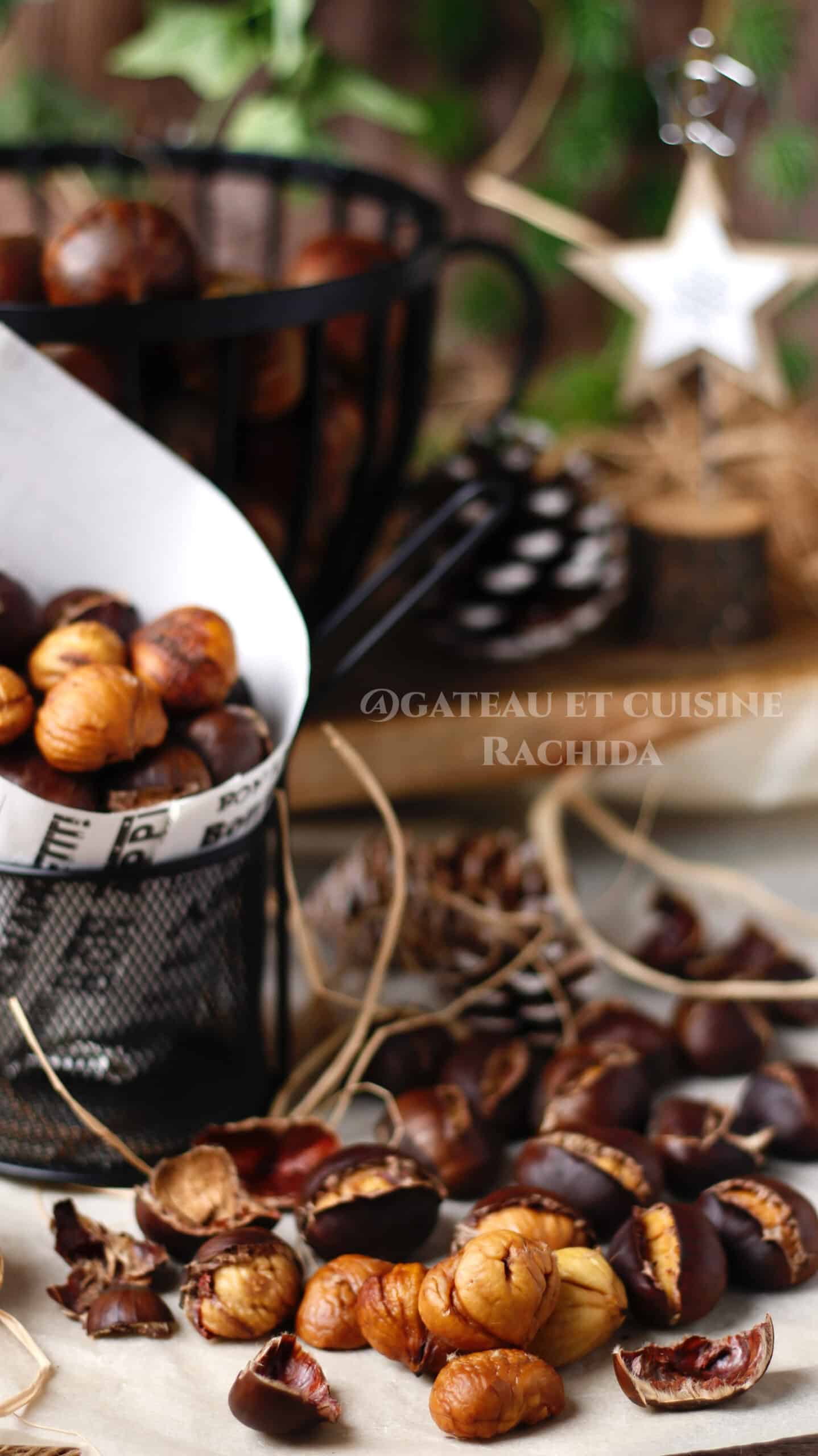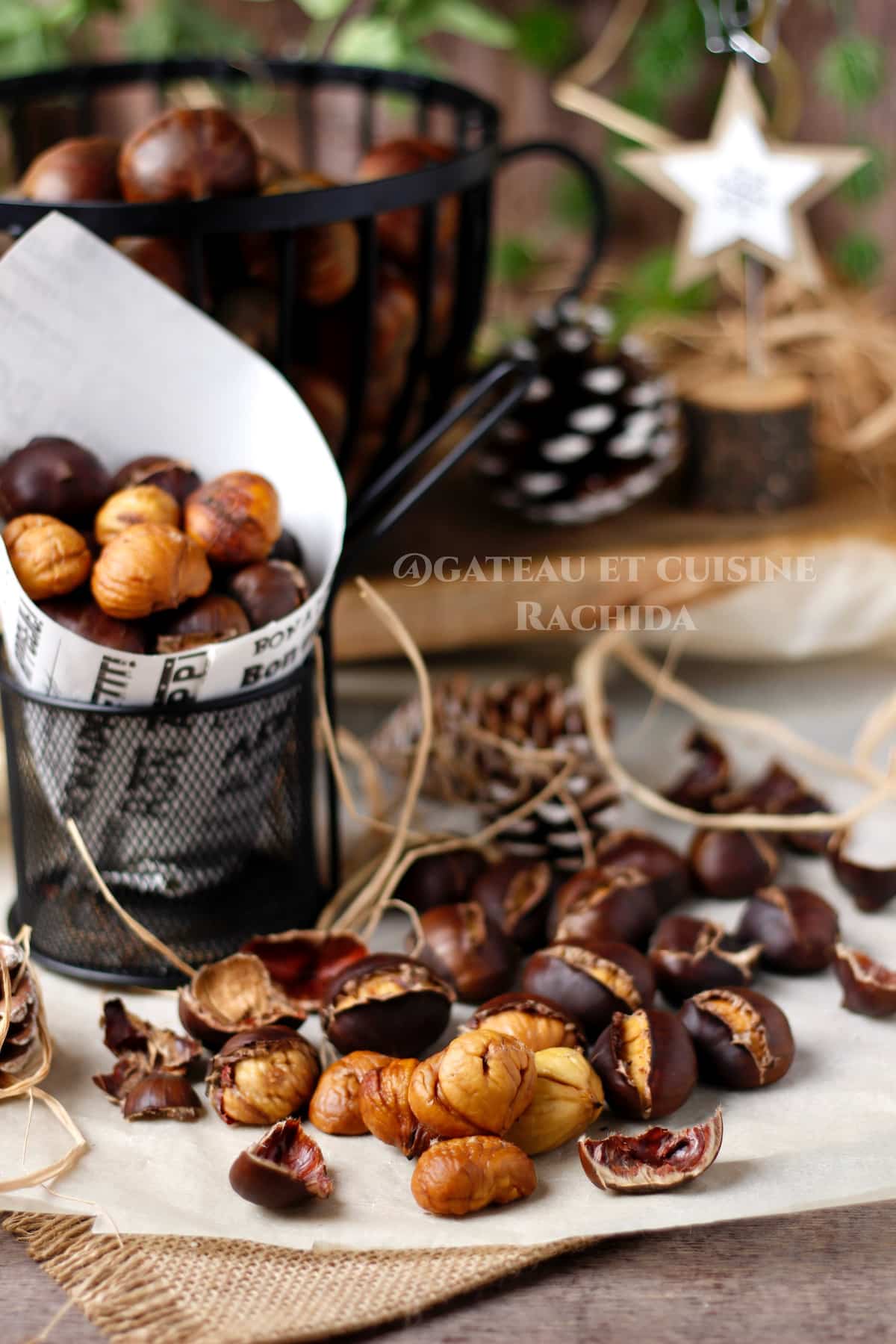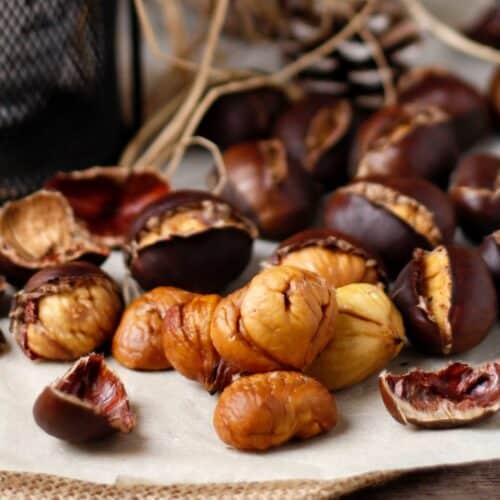
Oven-Roasted Chestnuts
Oven-roasted chestnuts are a simple and comforting pleasure that perfectly capture the warm spirit of autumn and the holiday season.
From the beginning of autumn, markets fill with seasonal fruits and vegetables. Pumpkin symbolizes Halloween, while roasted chestnuts bring back many warm family memories, strolls through narrow streets, Christmas markets, or forest walks for those lucky enough to gather chestnuts themselves.
Oven-roasted chestnuts are very easy to prepare and simple to peel (discover my tips for peeling chestnuts without an oven ). The oven is a great alternative to wood-fire roasting, just as easy and flavorful. They can be used in many recipes, such as a comforting chestnut soup, or served alongside a festive dish like Thanksgiving turkey. You can also glaze them lightly with honey and butter to bring out their delicate flavor.

Table of Contents
Tips for Successfully Roasting Chestnuts
Select fresh, high-quality chestnuts:
For a good result, you must choose healthy, worm-free chestnuts. If possible, buy them directly from a producer or at a local farmers’ market.
It is essential to ensure they are fresh to guarantee an optimal taste experience. Here are two simple methods to check chestnut freshness:
1. Appearance and Weight: First, examine the exterior of the chestnuts. Look for shiny, smooth, and crack-free shells. Avoid chestnuts that appear dull, dry, show signs of mold, or have holes indicating worms.
Another indicator of chestnut freshness is their weight. Fresh chestnuts are heavier because they are full.
2. Water Test: To confirm their freshness, you can use the water test. Submerge the chestnuts in a large bowl of water. Fresh chestnuts will sink to the bottom, indicating their good quality. Conversely, moldy or spoiled chestnuts will float to the surface, indicating they are no longer good to eat.
Score the Chestnuts: Before cooking, remember to lightly score the skin of the chestnuts. They won’t burst during cooking, will be easier to peel, and this will allow them to cook better inside.
Ensure the Oven is Well Preheated: Before cooking, preheat your oven to 200°C.
Monitor Cooking: It is important to regularly monitor the chestnuts as they cook to prevent them from burning. For more even cooking, stir the chestnuts every 10 minutes.
Serve Chestnuts Hot: Roasted chestnuts are best when served hot. Serve them immediately after cooking so everyone can enjoy their delicious flavor and tenderness.

Ingredients:
Note: Find the recipe card at the end of the article, which you can print.
- 1 kg / 2.2 lb chestnuts (200 g / 7 oz per person )

Preparation Steps:
Preheat your oven to 200°C (400°F) with convection.
Sort the chestnuts to remove any rotten or worm-eaten ones. Pour them into a large bowl filled with water and remove any that float. Fresh chestnuts will sink, while those that are not fresh will rise to the surface.
Wipe them dry, then using a sharp knife, make a horizontal incision on each chestnut’s rounded side, from one end to the other. Make sure to cut only the shell. This will prevent them from bursting in the oven and make them easier to peel once cooked.
Place the good chestnuts in a saucepan or Dutch oven and cover them with water. Bring to a boil.
Count 2 minutes after boiling, then remove from heat and drain. Wipe them thoroughly dry.
Arrange them in a single layer on a baking sheet covered with parchment paper.
Bake for 20 to 35 minutes. They will open slightly and be easier to peel. Stir occasionally for even cooking.
To check if they are cooked, insert a toothpick into a chestnut. If it’s tender inside, it’s cooked through. If it’s still hard, continue cooking for a few more minutes.
The chestnuts will be ready when their skin is slightly charred and the flesh inside is tender and flavorful.
Remove the chestnuts from the oven and let them cool slightly before serving.
Enjoy them hot or warm, preferably.

Flavorful Pairings:
Oven-roasted chestnuts are delicious on their own, but they can also be added to other dishes. Here are a few ideas:
Pumpkin Puree:
A creamy pumpkin puree pairs perfectly with roasted chestnuts. The sweetness of the puree perfectly complements the chestnuts’ flavor. You can blend them into the puree or simply sprinkle some crushed ones on top before serving.
Green Salad:
Bring an autumnal flavor by adding a handful of chestnuts to a simple green salad with a light vinaigrette. They will add flavor and crunch to the salad.
Goat Cheese:
Soft and creamy goat cheese is wonderful with roasted chestnuts. Prepare bruschetta with a little arugula, goat cheese, a few chestnuts, and a drizzle of honey.
Storing Roasted Chestnuts:
If you have leftover roasted chestnuts, you can store them for later use. It’s important to store them properly to prevent them from spoiling.
Here’s how to store your roasted chestnuts:
Place them in an airtight container. Ziploc bags or plastic containers are perfect for this.
Place them in the refrigerator if you plan to consume them within the next few days. They can be stored this way for about a week.
If you want to store them longer, you can put them in the freezer. Wrap them in plastic film or a freezer bag before placing them in the freezer. They will keep for several weeks this way.

Oven-Roasted Chestnuts
INGREDIENTS
- 1 kg chestnuts (200 g / 7 oz per person)
PREPARATION
- Preheat your oven to 200°C (400°F) with convection.
- Sort the chestnuts to remove any rotten or worm-eaten ones. Pour them into a large bowl filled with water and remove any that float. Fresh chestnuts will sink, while those that are not fresh will rise to the surface.
- Wipe them dry, then using a sharp knife, make a horizontal incision on each chestnut's rounded side, from one end to the other. Make sure to cut only the shell. This will prevent them from bursting in the oven and make them easier to peel once cooked.
- Place the good chestnuts in a saucepan or Dutch oven and cover them with water. Bring to a boil.
- Count 2 minutes after boiling, then remove from heat and drain. Wipe them thoroughly dry.
- Arrange them in a single layer on a baking sheet covered with parchment paper.
- Bake for 20 to 35 minutes. They will open slightly and be easier to peel. Stir occasionally for even cooking.
- To check if they are cooked, insert a toothpick into a chestnut. If it's tender inside, it's cooked through. If it's still hard, continue cooking for a few more minutes.
- The chestnuts will be ready when their skin is slightly charred and the flesh inside is tender and flavorful.
- Remove the chestnuts from the oven and let them cool slightly before serving.
- Enjoy them hot or warm, preferably.
Thank you for visiting my blog and for your comments.
